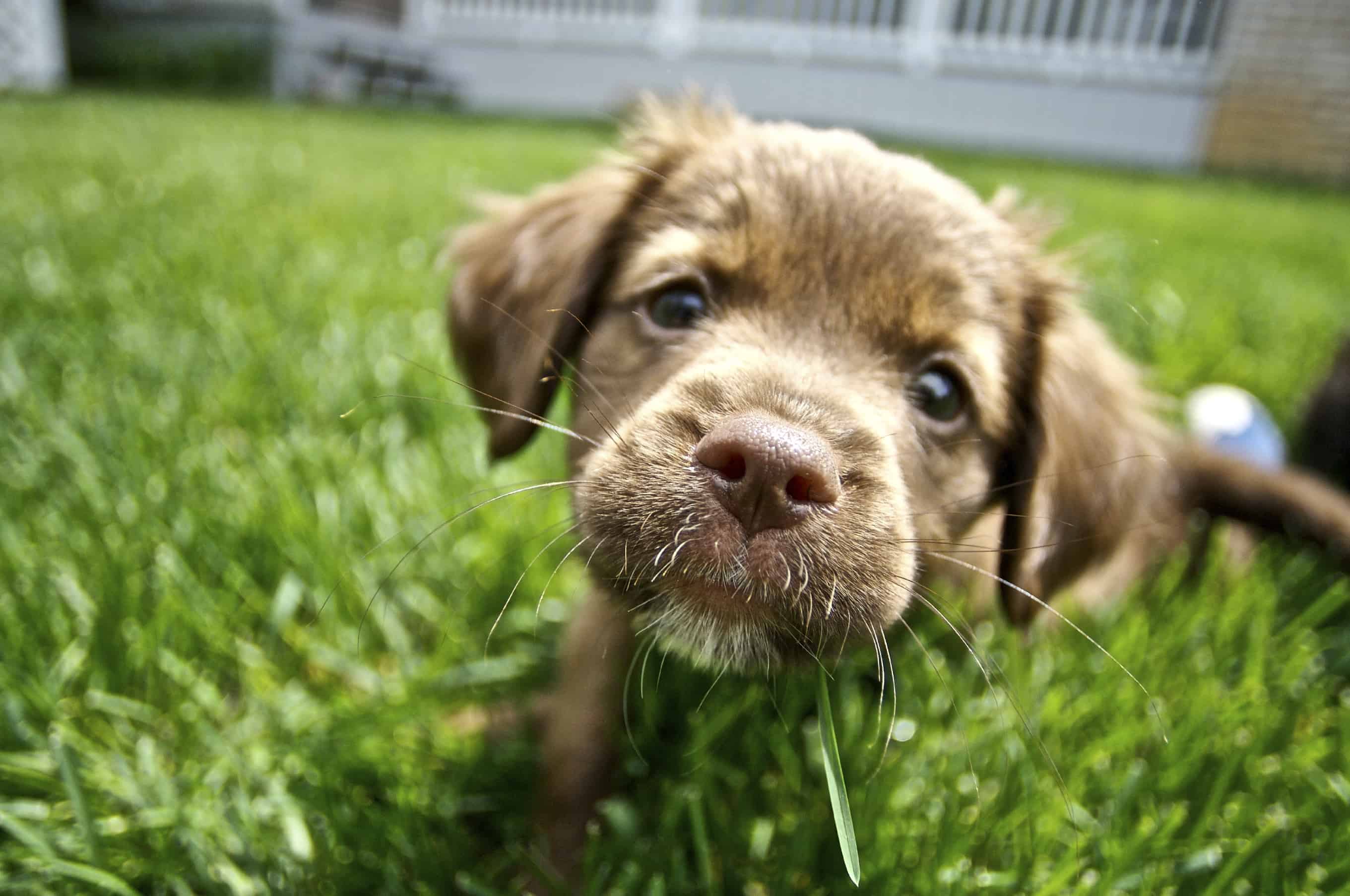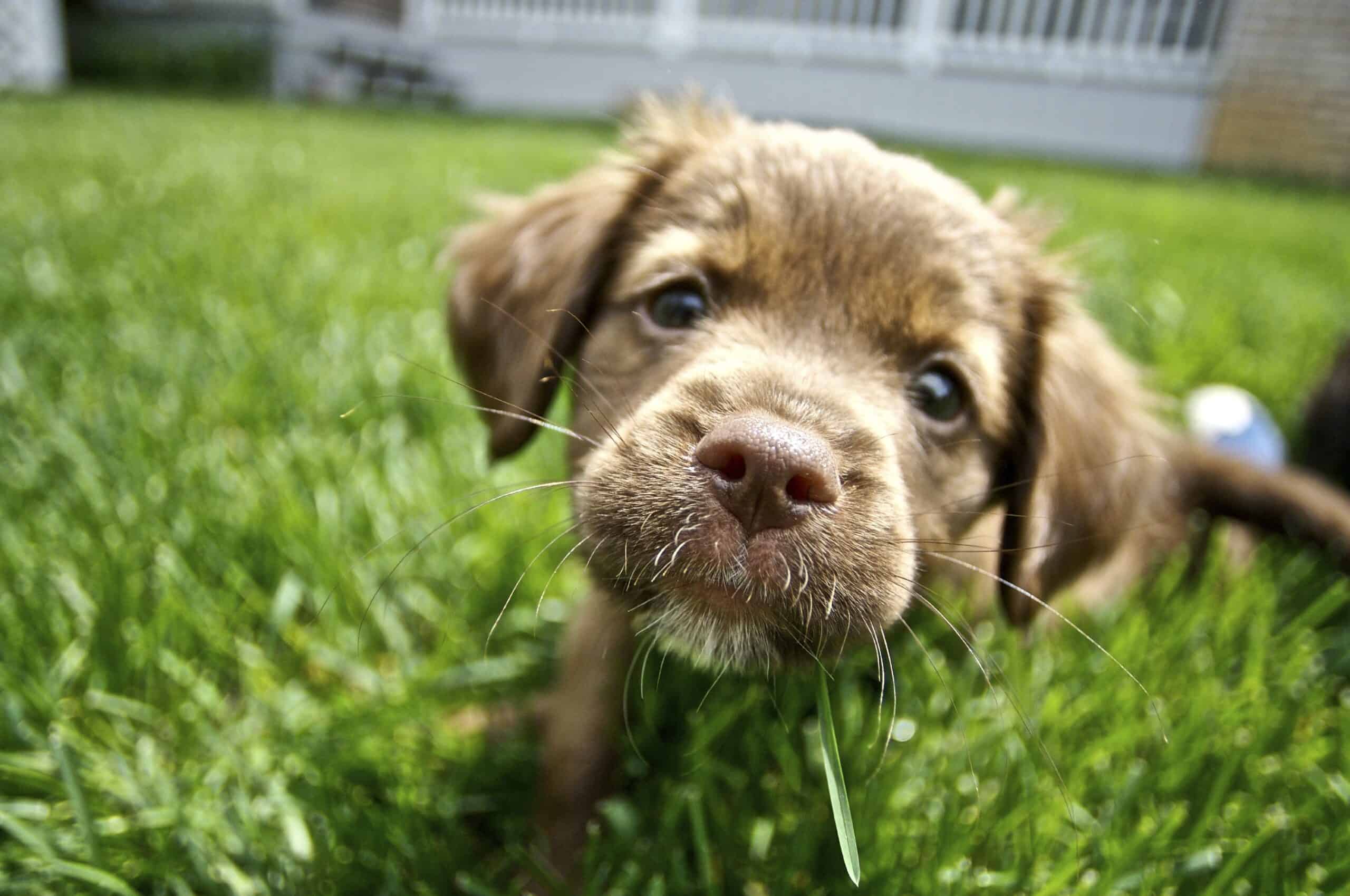Out and About: The Pet-Friendly Yard
 It is finally looking like spring, and chances are good that you and your pet are spending more time outdoors. Bonding between you, your four-legged friend, and Mother Nature can be an awesome experience. Make sure to maximize that time by being sure that you have a pet-friendly yard to relax in.
It is finally looking like spring, and chances are good that you and your pet are spending more time outdoors. Bonding between you, your four-legged friend, and Mother Nature can be an awesome experience. Make sure to maximize that time by being sure that you have a pet-friendly yard to relax in.
Steer Clear of Chemicals
Fertilizers, weed killers, and chemical pest control may make for a lush, green lawn, but they are often not in the best interest of our pets. Avoid using:
- Disulfoton pesticides (ingestion can cause vomiting, diarrhea, seizures, or death)
- Metaldehyde slug and snail baits (ingestion can cause seizures and death)
- Herbicides such as Round-Up (can cause digestive upset when wet and often get on paws and pet items in the yard)
Not much is known about the long-term effects of lawn and garden chemicals on pets. While many lawn care services claim to be pet-friendly, the truth is that the products they use have likely not been tested for the causation of chronic health issues.
The safest course of action is to use organic and natural options to maintain your yard. They are likely the best option for both people and pets.
Pet-Friendly Yard Landscaping
Try to think about your pets when choosing what plants and décor you place in your yard. Avoid toxic plants when possible. Some common plants that you should avoid where possible include:
- Azaleas
- Sago palms
- Lilies (for cats)
- Yew
Be sure to keep your landscaping safe for pets, too. Avoid metal edging that might cut paws. Mulch can be a tempting treat for some pets to chew on, and potentially can cause a gastrointestinal obstruction or become lodged in the mouth. Cocoa mulch, in particular, contains theobromine, the chemical that causes chocolate toxicity.
Consider installing paths in the areas your pet traverses the most to keep your yard looking tidy (and resulting in less mud in rainy weather!).
Keep Your Pet in Mind
If your goal is to allow your pet to enjoy your yard, by all means allow them to do so! You can make some simple changes that can make the great outdoors an enjoyable place for all. Be sure to secure areas that you don’t want your pet to have access to or that contain dangerous items.
It is also important to be sure that your yard is secure. Inspect fencing regularly for weaknesses. Remember that invisible fencing and tie-outs may keep your pet in the yard, but they do not prevent stray or wild animals from entering your property.
You might also consider:
Adding water – A small pool or fountain may be just the thing for your pet to cool off on hotter days and avoid heat stroke. If you choose to supply your pet with a water feature, be sure that he or she can enter and exit freely and that you discourage mosquitoes.
Supplying a digging area – Some pets love to dig. Provide a designated area or sandbox where you can allow your dog to go to town. You might even bury a treasure or two.
Made in the shade – Create a cool, sheltered area for your pet to lounge when the mercury rises. Be sure fresh, cool water is available.
On the lookout – Your pet may enjoy a raised platform or other surface from which they can view their domain.
Toys galore – A good supply of outdoor toys is a must. Rotate chew toys and other treats throughout the yard to keep your pet engaged.
With a little effort, your yard can be an oasis for both you and your pet. Beverly Hills Veterinary Associates hopes that you both can get out and soak up a little sunshine soon.

